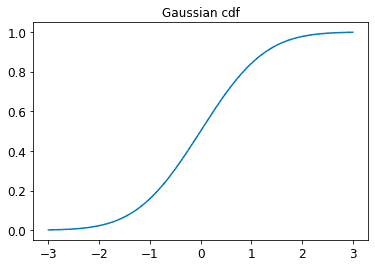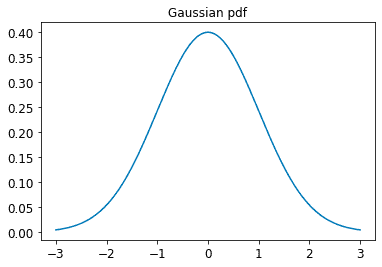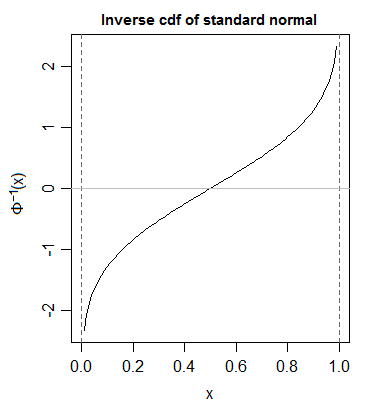- 2.1.3.2 Probability of an event
- 2.1.3.3 Probability of a union of two events
- 2.1.3.4 Conditional probability of one event given another
- 2.1.3.5 Independence of events
- 2.1.3.6 Conditional independence of events
- 2.2 Random variables
- 2.2.1 Discrete random variables (pmf)
- 2.2.2 Continuous random variables
- 2.2.2.1 Cumulative distribution function (cdf)
- 2.2.2.2 probability density function (pdf)
- 2.2.2.3 Quantiles (percent point function, ppf)
- 2.2.3 Sets of related random variables
- 2.2.4 Independence and conditional independence
- 2.2.5 Mean of a distribution
- 2.2.5.2 Variance of a distribution
- 2.2.5.3 Mode of a distribution
- 2.2.5.4 Conditional moments
- 2.3 Bayes' rule
2.1.3.2 Probability of an event
We denote the joint Probability of events A and B both happening as follows:
If A and B are independent events, we have:
2.1.3.3 Probability of a union of two events
The probability of evetnt A or B happening is given by:
If the events are mutually exclusive (so they cannot happen at the same time), we get:
2.1.3.4 Conditional probability of one event given another
We define the conditional probability of event B happening given that A has occurred as follows:
2.1.3.5 Independence of events
We say that event A is independent of event B if:
2.1.3.6 Conditional independence of events
We say taht events A and B are conditionally independent given event C if:
This is written as . Events are often dependent on each other, but may be rendered independent if we condition on the relevant intermediate variables.
2.2 Random variables
If the value of is unknown and/or cound change, we call it a random variable or rv. The set of possible values, denoted , known as the sample space or state space.
2.2.1 Discrete random variables (pmf)
If the sample space is finite or countably infinite, then is called a discrete random variable. In this case, we denote the probability of the event that has value by . We define the probability mass function or pmf as a function which computes the probability of events which correspond to setting the rv to each possible value:
and
2.2.2 Continuous random variables
If is a real-valued quantity, it is called a continuous random variable.
2.2.2.1 Cumulative distribution function (cdf)
Define the events , and , where . We have that , and since and are mutually exclusive, the sum rules gives:
and hence the probability of being in interval is given by
In general, we define the cumulative distribution function or cdf of the as follows:
Using this, we can compute the probability of being in any interval as follows:
Here is an example of cdf for standard normal distribution:

2.2.2.2 probability density function (pdf)
We define the probability density function or pdf as the derivative of the cdf:
Example of pdf for standard normal distribution:

Given a pdf, we can compute the probability of a continuous variable being in a finite interval as follows:
As the size of the interval gets smaller, we can write
2.2.2.3 Quantiles (percent point function, ppf)
If the cdf is strictly monotonically increasing, it has an inverse, called the inverse cdf, or percent point function (ppf), or quantile function. For example, let be the cdf of Gaussian distribution , and be the inverse cdf.
If the distribution is , then 95% interval becomes (). This is often approximated by writing
2.2.3 Sets of related random variables
We have two random variables, and . We can define the joint distribution of two random variables using for all possible values of and . With finite cardinality, we can represent the joint distribution as a 2d table:
| 0.2 | 0.3 | |
| 0.3 | 0.2 |
Given a joint distribution, we define the marginal distribution of an rv as follows:
This is also called the sum rule.
We difine the conditional distribution of an rv using
We can rearrange this equation to get
This is called the product rule.
By extending the product rule to variables, we get the chain rule of probability:
2.2.4 Independence and conditional independence
We say and are unconditional independent or marginally independent, denoted , if we can represent the joint as the product of the two marginals, i.e.,
In general, we say a set of variables is independent if the joint can be written as a product of marginals, i.e.,
Unconditional independence is rare. We therefore say and are conditionally independent (CI) given iff the conditional joint can be written as a product of conditional marginals:
2.2.5 Mean of a distribution
For continuous rv's, the mean is defined as follows:
For discrete rv's, mean:
Mean is a linear operator, we have
This is called linearty of expectation.
For a set of rv's, one can show that the expectation of their sum is as follows:
If they are independent, the expectation of their product is given by
2.2.5.2 Variance of a distribution
The variance is a measure of the "spread" of a distribution, often denoted by .
from which we derive the useful result:
The standard deviation is defined as:
This is useful since it has the same units as itself.
Shifted and scaled variance:
Variance of the sum of a set of independent random variables:
Variance of the product of a set of independent random variables:
2.2.5.3 Mode of a distribution
The mode of a distribution is the value with the highest probability mass or probability density:
2.2.5.4 Conditional moments
When we have two or more dependent random variables, we can compute the moments of one given knowledge of the other. For example, the law of iterated expectations, also called the law of total expetation, tells us that:
Similarly, for variance, we have the law of total variance, also called the conditional variance formula, tells us that:
